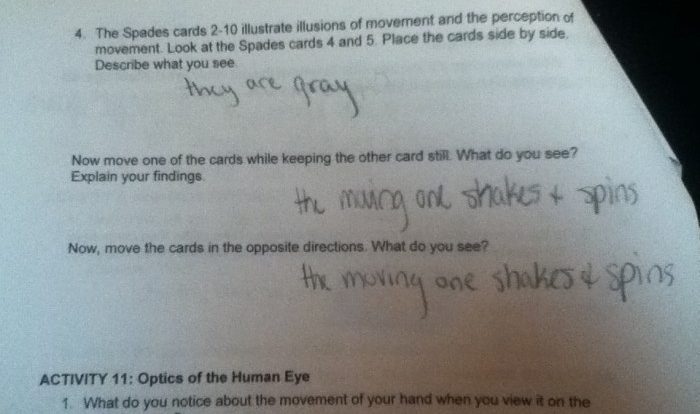Read theory answers grade 7 – Delve into the world of Read Theory Answers for Grade 7, where students embark on an exciting journey to enhance their comprehension and critical thinking skills. This comprehensive guide provides a roadmap for navigating the complexities of Read Theory, empowering students to unlock the secrets of effective analysis and achieve academic success.
From understanding the purpose and structure of Read Theory answers to mastering advanced techniques, this guide offers a wealth of strategies and insights to guide students every step of the way.
Understanding Read Theory Answers for Grade 7

Read Theory answers for Grade 7 are designed to assess students’ comprehension of the provided text. These answers provide detailed explanations and support for each question, aiding students in developing their critical thinking and reading comprehension skills.
The Read Theory answers are structured to follow the sequence of the text, with each question corresponding to a specific paragraph or section. This organization helps students easily navigate the answers and connect them to the relevant parts of the text.
Types of Questions, Read theory answers grade 7
The Read Theory answers cover various types of questions that test different comprehension skills, including:
- Main Idea:Identifying the central theme or message of the text.
- Supporting Details:Locating specific information that supports the main idea or other claims made in the text.
- Inference:Drawing conclusions based on the information provided in the text.
- Vocabulary:Understanding the meaning of unfamiliar words or phrases used in the text.
- Figurative Language:Identifying and interpreting literary devices such as metaphors, similes, or personification.
Each type of question requires a different approach. For instance, main idea questions typically require students to identify the overall message of the text, while supporting details questions focus on locating specific pieces of information. By understanding the different types of questions and their requirements, students can effectively approach and answer them.
Strategies for Analyzing Answers
To comprehend and critically evaluate answers, employ these strategies:
1. Identify Key Ideas and Supporting Evidence
Read the answer thoroughly, highlighting the main points and supporting details. Look for evidence from the text that supports the answer’s claims.
Consider the following tips for identifying key ideas and supporting evidence:
- Use context clues:Look for clues in the surrounding text that provide context for the answer.
- Refer to the question:The question often provides clues about the key ideas that should be addressed in the answer.
- Look for specific examples and details:Answers that provide specific examples and details are often more credible.
- Evaluate the evidence:Determine whether the evidence provided supports the answer’s claims and is relevant to the question.
Common Errors and Pitfalls
Analyzing answers in Read Theory requires careful attention to detail and an understanding of the text. However, students often make common errors that can lead to incorrect interpretations and missed opportunities for learning.
Identifying Errors
- Ignoring the context:Students may focus solely on the answer choices without considering the context of the passage. This can lead to misinterpretations and incorrect conclusions.
- Misreading the question:It’s essential to read the question carefully and understand its intent. Misreading the question can lead to choosing an answer that does not accurately address it.
- Assuming that all answer choices are equally valid:Some answer choices may be deliberately misleading or irrelevant. Students should evaluate each choice critically and consider its validity.
Strategies for Avoiding Pitfalls
To improve accuracy in analyzing answers, students should employ the following strategies:
- Read the passage thoroughly:Understanding the context is crucial for selecting the correct answer. Students should take time to read the passage carefully and identify key details.
- Re-read the question:Before considering the answer choices, students should re-read the question to ensure they fully understand what is being asked.
- Eliminate incorrect choices:By critically evaluating each answer choice, students can eliminate those that are clearly incorrect or irrelevant. This narrows down the options and increases the likelihood of choosing the correct answer.
- Consider the author’s purpose:Understanding the author’s purpose and perspective can help students interpret the text and select the answer that aligns with the author’s intent.
- Use evidence from the text:Students should refer to the text to find evidence that supports their chosen answer. This helps ensure that their answer is grounded in the text.
Examples and Case Studies

Analyzing answers in Read Theory requires a deep understanding of the text and the ability to identify key points and evidence. Here are some examples of well-analyzed answers and explanations for their effectiveness:
Effective Analysis
- Answer:The main idea of the passage is that technology has both positive and negative effects on society.
- Explanation:This answer effectively identifies the main idea of the passage by summarizing its central argument. It also highlights the balanced perspective presented in the passage, acknowledging both the benefits and drawbacks of technology.
Case Study
Student A:Before, my answers were often too brief and lacked specific evidence from the text. I struggled to identify key points and explain my reasoning.
After practicing analysis strategies:My answers became more detailed and supported by specific examples from the passage. I learned to break down complex ideas and explain my interpretations clearly.
If you’re searching for top-notch assistance with your Read Theory answers for Grade 7, look no further! While you’re at it, don’t miss out on our comprehensive guide to the ATI Med Surg Proctored 2023 exam. With our expert tips and insights, you’ll be well-prepared to conquer any nursing challenge that comes your way.
Now, back to those Read Theory answers – let’s ace them together!
Advanced Techniques: Read Theory Answers Grade 7

To deepen understanding, advanced techniques go beyond basic comprehension. These include leveraging context clues and employing inferencing to extract implicit meanings and draw logical conclusions.
Context Clues
Context clues are hints within the text that provide additional information about unfamiliar words or concepts. They can be explicit, such as definitions or synonyms, or implicit, such as examples or comparisons.
- Definition:“The word ‘ethereal’ means ‘light and airy’.”
- Synonym:“The ‘audacious’ climber scaled the treacherous peak.” (Audacious means daring)
- Example:“The ‘noxious’ fumes made it difficult to breathe.” (Noxious means harmful)
- Comparison:“The ‘diminutive’ hummingbird is smaller than a sparrow.” (Diminutive means very small)
Inferencing
Inferencing involves making logical deductions based on the information provided in the text. Readers draw conclusions by connecting ideas, making assumptions, and predicting outcomes.
- Cause and Effect:“The storm caused the power outage.” (Implies a causal relationship)
- Problem and Solution:“The drought led to water shortages.” (Suggests a problem-solving scenario)
- Comparison and Contrast:“The cheetah is faster than the lion.” (Implies a difference in speed)
li> Prediction:“The weather forecast predicts rain.” (Draws a conclusion based on given information)
FAQ
What is the purpose of Read Theory Answers for Grade 7?
Read Theory Answers for Grade 7 provides students with a structured framework for analyzing and comprehending complex texts, enhancing their critical thinking and reading skills.
How can students approach different types of questions in Read Theory?
By understanding the question types and employing specific strategies, students can effectively tackle multiple-choice, short answer, and open-ended questions.
What are some common errors students make when analyzing answers?
Students may overlook key details, fail to identify supporting evidence, or make assumptions that are not supported by the text. This guide highlights these common pitfalls and provides strategies to avoid them.

